|
|
|
Tutorial 4: Two Chairs In tutorial 3, I showed you how we could transform a digital photograph into something that felt like a hand-drawn and hand-painted illustration. In this column I will show you something quite different. We will retain some of the photo-realistic feel of the original photograph, while adding a degree of movement and mystery to the final image. |
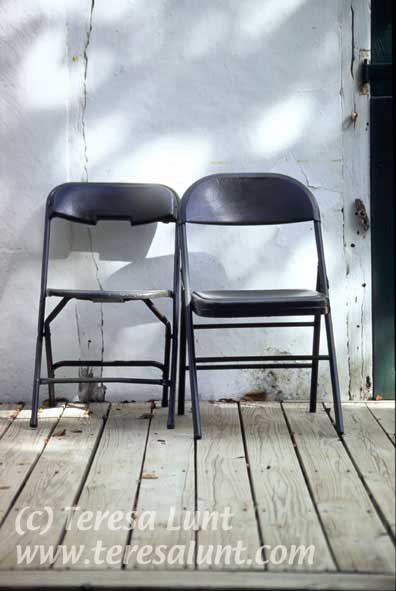
|
I shot this photograph with Fuji Sensia 100 film and scanned the resulting color slide with my Minolta desktop filmscanner. This produced a file of around 20MB after converting to 8 bit color (the scanner produces scans in 16 bit color, with the file twice as large, but most of the manipulations I do in Photoshop work only on 8 bit files, so I have to lose that extra precision). |
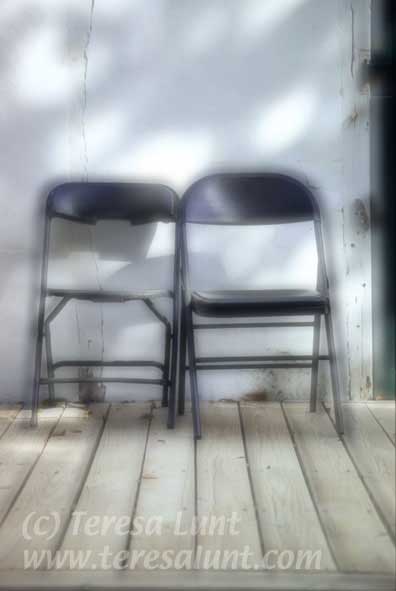
|
These manipulations, of creating a slightly enlarged blurred layer and blending it with the original image, are inspired by Freeman Patterson and Andre Gallant's book Photo Impressionism and the Subjective Image. In that book, the authors describe the technique of slide montages, in which you photograph the same subject two or more times on color slide film, with one or two of the exposures taken out of focus (blurred) and slightly zoomed in or out or slightly off center. Then the multiple slides are sandwitched to create the final image. Here we have done a very similar thing in Photoshop, using layers to blend the blurred and unblurred image, instead of different sandwitched slides. |
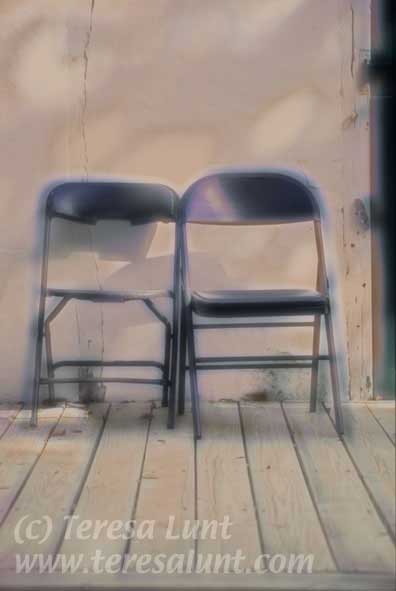
|
The history brush in Photoshop works as follows. Photoshop keeps a history of the past several states of the image (this is true only of the full version of Photoshop, not the free versions that come with some scanners and digital cameras). The history brush lets you select one of these history states, and then when you paint with the brush you are actually painting with pixels taken from the history state you selected. This is an easy way to selectively merge two states of an image. You use the brush to paint over just those areas where you want to make this merge. You can change the opacity of the brush to increase or decrease the effect. This is a fun brush to experiment with, especially after you have made some dramatic color changes to the image, as we have done here. |
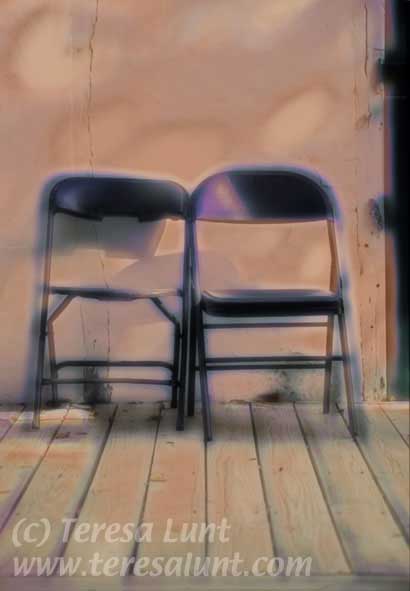
|
To give the image a final ghostlike quality, I used Filter>Distort>Pinch with a value of 25. The pinch filter pinches the center of the image, shrinking it relative to the rest of the image. The setting of 25 is a medium setting, because I didn't want a really strong distorting effect. Then I used Filter>Fade to blend the pinched image with the unpinched version of the image. I also used Image>Replace Color to darken the shadows on the far wall. The result, shown in Figure 5, gives the feeling that the chairs have been recently moved by the departure of their occupants. This happens because pinch effects primarily the center of the image, where the chairs are, and not the wall behind or the wooden deck in front. So only the chairs appear to be in motion, against a stationary background. You can almost feel the absent occupants of the chairs, as their motion in conversing with each other and then finally leaving the scene moves the position of the chairs slightly. |
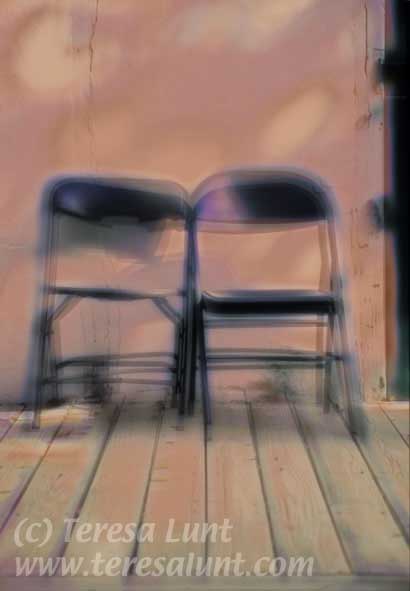
|
If you compare the original image with the final result, you can see that we transformed a quite literal image to a mysterious one that suggests missing actors and a piece of a story. |
![]()
